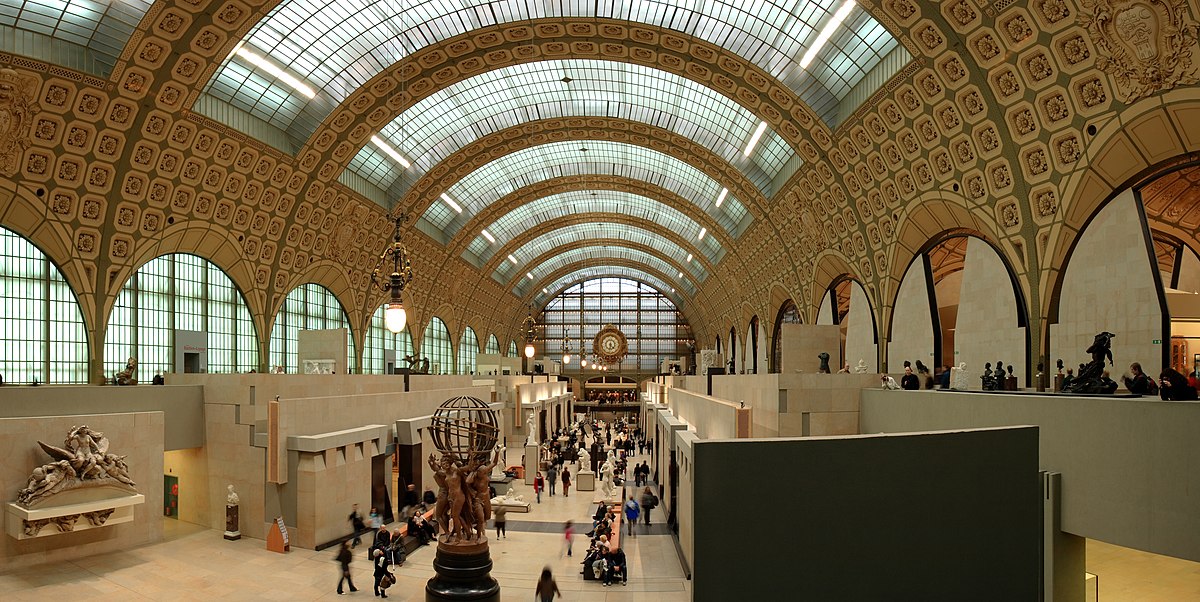The Musée d’Orsay, located in Paris, France, is a celebrated institution renowned for its vast collection of French art spanning the period from 1848 to 1914. Housed in a grandiose former railway station, the museum stands as a testament to the rich cultural heritage of France during the transformative years of the 19th and early 20th centuries. With its distinctive Beaux-Arts architecture and unparalleled collection, the Musée d’Orsay is a cornerstone of the Parisian art scene, attracting millions of visitors from around the world each year.
The museum’s origins lie in the transformation of the Gare d’Orsay, a once bustling train station constructed for the Exposition Universelle of 1900. By the mid-20th century, the station had fallen into disuse, and there were discussions about its potential demolition. However, in a stroke of visionary insight, it was decided to repurpose the building into a museum dedicated to the artistic achievements of the 19th and early 20th centuries. Thus, the Musée d’Orsay was born, opening its doors to the public in December 1986.
Upon entering the museum, visitors are greeted by the grandeur of the Beaux-Arts architecture, characterized by its ornate ironwork, soaring ceilings, and expansive windows that flood the space with natural light. This architectural marvel serves as the perfect backdrop for the museum’s extensive collection, which encompasses a wide array of artistic movements, from Impressionism and Post-Impressionism to Symbolism and Art Nouveau.
One of the most iconic works housed within the Musée d’Orsay is Édouard Manet’s “Olympia,” a provocative masterpiece that caused a sensation when it was first exhibited in 1865. Depicting a reclining nude woman staring boldly at the viewer, “Olympia” challenged traditional notions of femininity and sparked heated debates about morality and artistic expression.
The museum’s collection also features an impressive selection of works by the Impressionists, including Claude Monet, Pierre-Auguste Renoir, and Edgar Degas. These artists revolutionized the art world with their innovative approach to light, color, and brushwork, capturing fleeting moments with a sense of immediacy and spontaneity.
In addition to its extensive holdings of painting, the Musée d’Orsay boasts a diverse array of sculptures, decorative arts, and photography. Visitors can marvel at Auguste Rodin’s emotive sculptures, such as “The Thinker” and “The Kiss,” which exemplify the artist’s mastery of form and expression.
For lovers of decorative arts, the museum offers a treasure trove of Art Nouveau furnishings, ceramics, and glassware, showcasing the intricate craftsmanship and avant-garde designs of the era. Meanwhile, photography enthusiasts can explore the evolution of the medium through the museum’s collection of vintage prints, daguerreotypes, and early experiments in photographic technique.
Beyond its permanent collection, the Musée d’Orsay hosts a dynamic program of temporary exhibitions, educational workshops, and cultural events, ensuring that there is always something new and exciting to discover. Whether you’re a seasoned art aficionado or a casual visitor, a trip to the Musée d’Orsay is sure to leave a lasting impression, offering a captivating journey through one of the most vibrant and transformative periods in art history.



